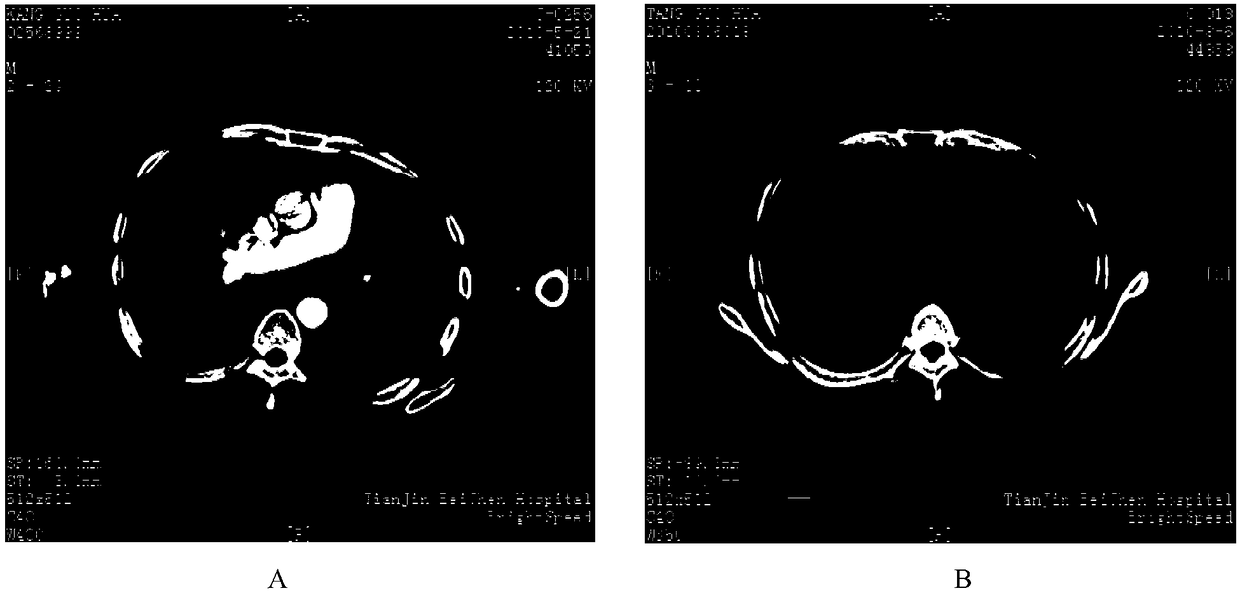Antigen peptide chain group for treating tumor and application of antigen peptide chain group in medicine
A technology of antigenic peptides and drugs, applied in the field of malignant tumor bioimmune drugs, can solve problems such as difficult side effects and non-specificity
- Summary
- Abstract
- Description
- Claims
- Application Information
AI Technical Summary
Problems solved by technology
Method used
Image
Examples
Embodiment 1
[0065] Patient A, female, 49 years old. Right lung adenocarcinoma, multiple lymph node metastasis, clinical stage IV, lung tumor with iodine 125 seed implantation once, progressed after 3 times of gemcitabine single-agent chemotherapy, liver metastases progressed after chemoembolization, EGFR molecular targeted drug resistance . Multiple lung metastases, liver metastases, pleural metastases, bone metastases, and abdominal lymph node metastases. Biopsy of lung lesions was taken, whole exome sequencing and HLA typing microarray were performed. The patient carried EGFR p.T790M, and the HLA typing was HLA-A: A*0216 A*3002; HLA-B: B*1502 B*5801; HLA-C: C*0303 C*1203; HLA-DQB1: DQB1*0401 DQB1*0602; HLA-DRB1: DRB1*1101 DRB1*1501.
[0066] Use the specific tumor antigen peptide chain combination therapy of the present invention once a week for a total of 6 weeks. The secretion of specific CD8+ Tetramer+ T cells was detected by spot detection before and after the injection of the an...
Embodiment 2
[0071]Patient B, male, 73 years old, lung squamous cell carcinoma, liver metastases, no indication for surgery, 6 weeks of pemetrexed + cisplatin intravenous chemotherapy, progression after 1 cycle of pemetrexed chemotherapy, iodine 125 seed implantation Progress after admission. After whole exome sequencing and HLA typing chip detection, the results showed that the patient carried EGFR p.T790M mutation, and the HLA typing was HLA-A: A*0202 A*0212; HLA-B: B*0702 B*0808; HLA-C: C*0401 C*0701; HLA-DQB1: DQB1*030302 DQB1*0601; HLA-DRB1: DRB1*0401 DRB1*1002.
[0072] Combination therapy was performed using the tumor-treating antigen peptide chain group of the present invention, once a week for a total of 12 weeks. The specific selected peptide chains are as follows: SEQ ID No: 3+SEQ ID No: 4+SEQ ID No: 7+SEQ ID No: 23+SEQ ID No: 28+SEQ ID No: 30.
[0073] Changes in lung tumor size before and after treatment image 3 shown, by image 3 It can be seen that the size of the left ...
Embodiment 3-60
[0075] Example 3-60 Different types and degrees of cancer patients were selected and treated with different combinations of antigen peptide groups, once a week for a total of 12 weeks. The HLA*A3101-HVKITDFGR Tetramer staining results of Example 3-60 and the changes in the size of lung tumors before and after treatment were similar to those in Example 1-2. Due to space limitations, they will not be repeated here. The above results all indicate that the antigen peptide chain group of the present invention can induce tumor-producing dendritic cells, and dendritic cells, which are antigen-presenting cells, can present antigen information to T cells, interact with T cells, and make T cells produce It specifically kills tumor cells and plays a role in killing tumor cells, and the effect is obvious.
[0076] During the treatment of Example 1-60, ELISA was used to detect the secretion of specific IFN-γ before the use of the antigen peptide chain, 3 weeks, 7 weeks and 11 weeks after a...
PUM
 Login to View More
Login to View More Abstract
Description
Claims
Application Information
 Login to View More
Login to View More - R&D
- Intellectual Property
- Life Sciences
- Materials
- Tech Scout
- Unparalleled Data Quality
- Higher Quality Content
- 60% Fewer Hallucinations
Browse by: Latest US Patents, China's latest patents, Technical Efficacy Thesaurus, Application Domain, Technology Topic, Popular Technical Reports.
© 2025 PatSnap. All rights reserved.Legal|Privacy policy|Modern Slavery Act Transparency Statement|Sitemap|About US| Contact US: help@patsnap.com



